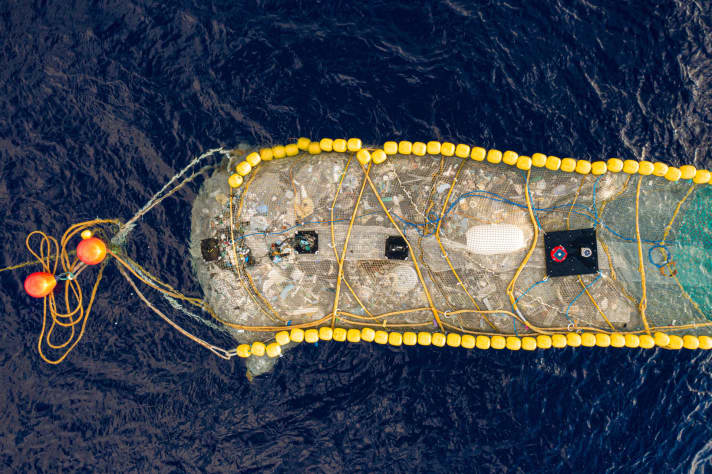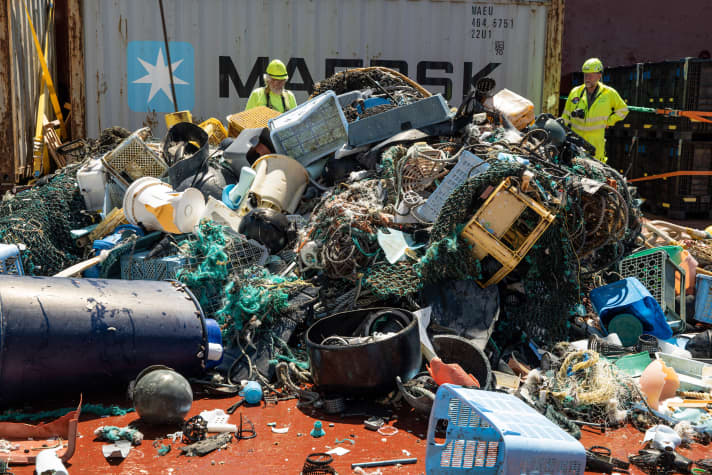
Freeing the world's oceans from plastic is the goal of the organisation "The Ocean Cleanup". It was founded in 2013 and is based on an idea by the then 18-year-old Dutchman Boyan Slat: with the help of an artificial coastline on the high seas, everything that doesn't belong in the oceans is to be fished out. To this end, fender chains with nets are deployed over a span of 800 metres, in the middle of which the rubbish floating on the surface of the sea and below is collected in a large net funnel.
The biggest challenge in the development is to align the coastline floating on the surface of the water against the current that carries the rubbish with it. Following trials with wind- and wave-driven collection areas held on the seabed or with drift anchors in various areas, a further approach is now being tested: "System 002" has been in operation in the North Pacific since July. It is towed by ships.

It is located in the "Great Pacific Garbage Patch". The North Pacific Gyre is an ocean current that spans the entire North Pacific from California to Japan. The rubbish is literally trapped in it. This phenomenon was discovered in 1997 by US sailor Charles Moore, who was taking part in the Trans Pacific Yacht Race (Transpac). On the way back from Hawaii to California, his yacht passed a plastic carpet of gigantic proportions for a week. It is estimated that the world's largest marine litter spill is three times the size of France. There are at least four others in the South Pacific, North and South Atlantic and Indian Ocean.

Last week, "System 002" was able to recover a huge amount of fishing nets, canisters and other plastic. In a post on Instagram, "The Ocean Cleanup" describes this as the "moment we knew it was possible to clean up the Great Pacific Garbage Patch".
"System 002" is not yet the final stage of development, but will continue to be used until the next prototype is ready. At the end of the test series, the aim is to have a product ready for series production that can be used to permanently fish out plastic waste at ten different locations.
At the same time, the organisation is working on the development of floating waste collectors for use in rivers. The organisation's ambitious goal is to collect 90 per cent of floating waste by 2040.
